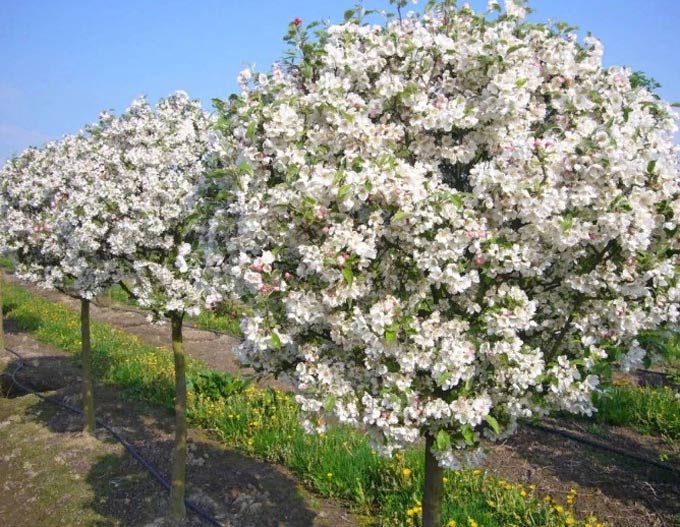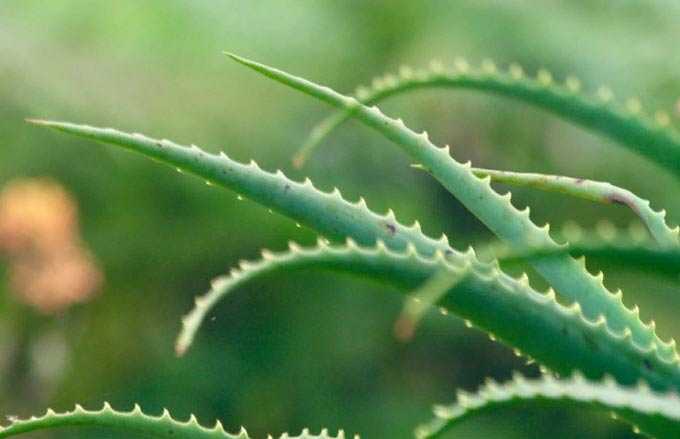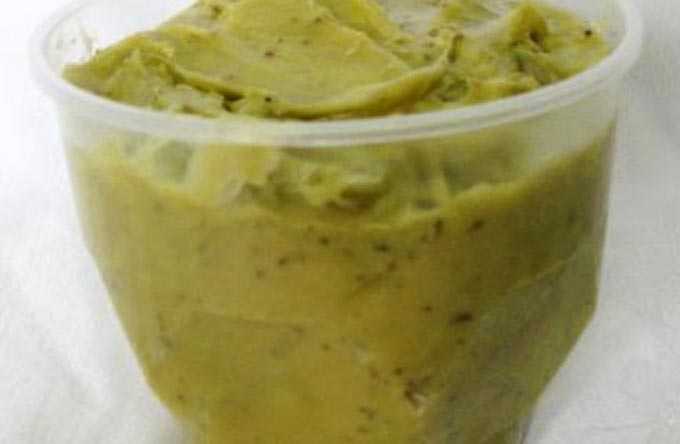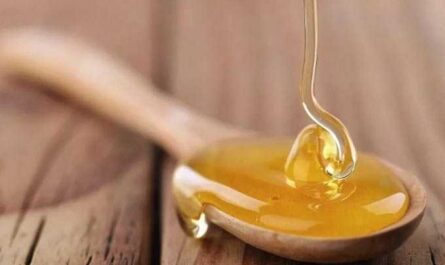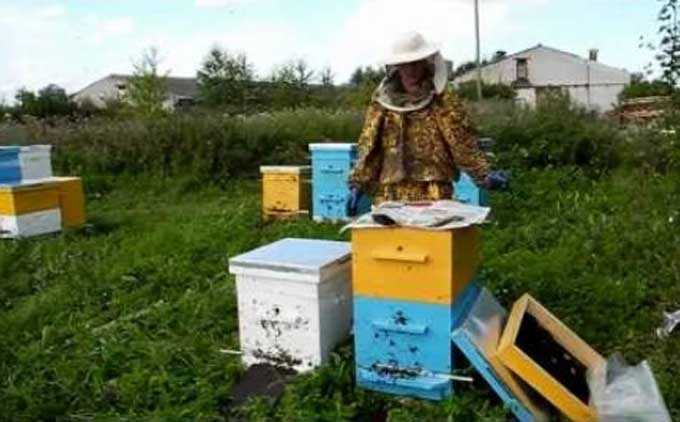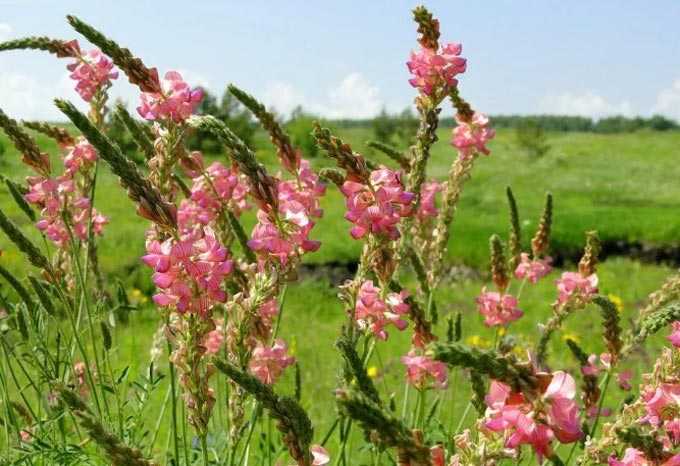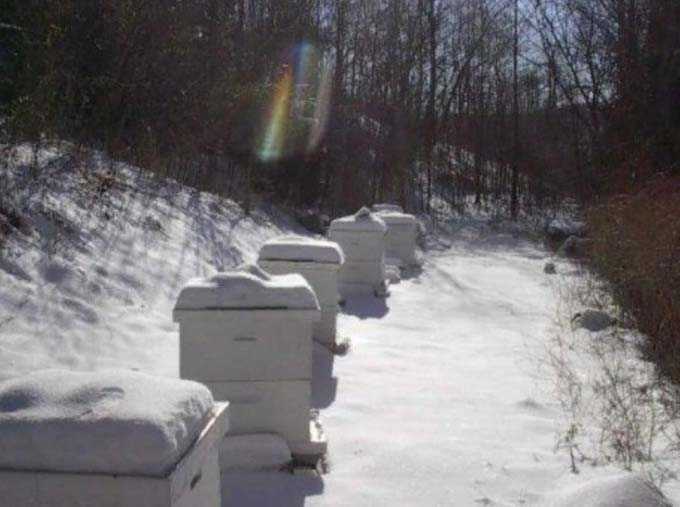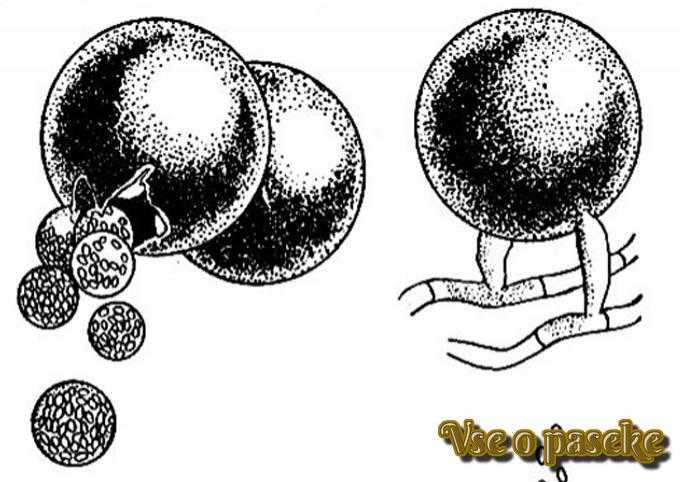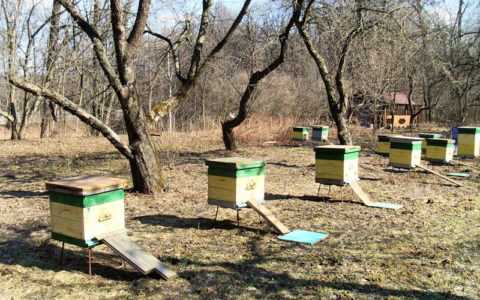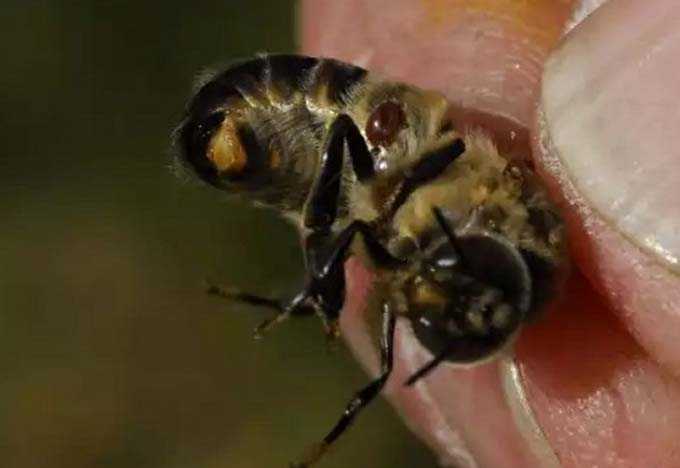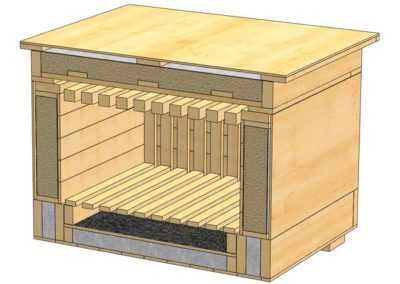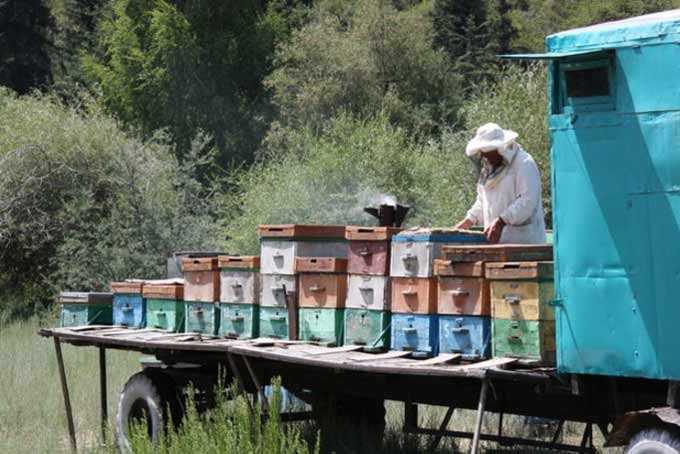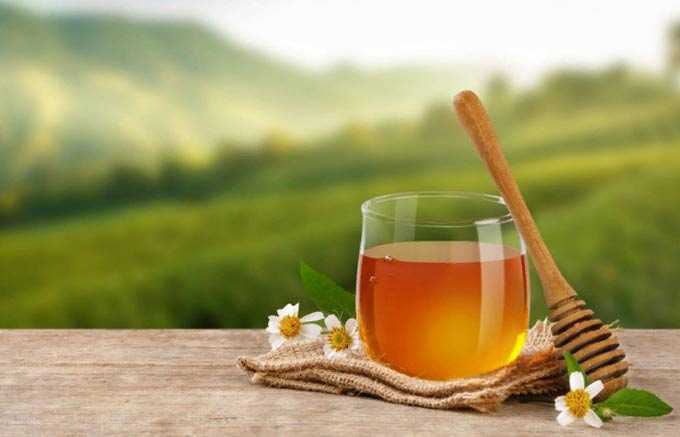The apple tree as a honey plant provides a good spring flow. Pollination by bees of these valuable fruit-bearing trees is an indispensable element of their agricultural technology. In order to increase and extend the bribes, beekeepers practice planting both early and late varieties of apple trees in their orchards or in near-field areas.
The content of the article
- 1 Description
- 2 Significance for agriculture
- 3 Honey productivity
- 4 Increasing productivity (agricultural technology)
- 5 Useful Properties
Description
Apple trees are ubiquitous. The total number of these trees among other horticultural crops is about 75%. Thanks to breeding work, various varieties have been developed that are adapted to growth in most climatic zones.
All varietal trees come from wild plants, which also provide a good honey flow. True, wandering to wild apple thickets is not practiced among beekeepers.
Depending on the variety, the tree can reach a height of 5 to 10 meters. It has fluffy buds and ovoid foliage, also covered on the underside with a delicate downy. The spreading crown is formed by large branches. In garden conditions, it is easily formed during spring pruning, acquiring a shape and height convenient for the owners.
The flowers of apple trees are large, regular in shape, white inside and slightly pinkish outside, compared to other fruit trees. The flowering of each individual flower lasts no longer than 5-8 days.
Significance for agriculture
There is no particular need to remind that any varietal apple tree pleases its owners with tasty and aromatic fruits – a rich source of ascorbic acid and other vitamins.
Apples are widely used in cooking, for preserving compotes, juices, preserves and jams. They are dried and dried in slices. And large horticultural farms collect apples to obtain valuable natural juice, useful for both children and adults.
Apiaries wander to cultivated apple plantations before their flowering (dates are set according to the climatic conditions of a particular region).
It was noted that the early varieties require fewer colonies for pollination than the later ones, since the amount of pollen in them is insignificant. But the sugar content of the nectar varies depending on the variety, but this does not in any way affect the attendance of flowers by bees.
Honey productivity
The productivity of late varieties, which are distinguished by large flowers, is always higher than that of early varieties, in which the flowers are smaller.
The apple honey plant per hectare of cultivated plantations provides up to 20 kilograms of nectar in the spring.
The resulting honey is viscous, very sweet, aromatic. It has a pleasant light yellow color. The work of bees on apple trees can be seen from the pollen – the collected pollen will be a dirty yellow hue.
Apple honey is a part of the May variety – one of the most appreciated in the market and in folk medicine. In addition to apple nectar, it contains bribes received from other early melliferous plants that bloom from April to the end of May. These include dandelions, garden bushes and various fruit trees, bird cherry, sage, coltsfoot, hazel, alder, willow, Norway maple and other plants.
Increasing productivity (agricultural technology)
In order for bees to collect more nectar from apple trees, a whole range of agrotechnical measures is used. The most important of these is the pruning of trees on which an excess amount of fruit is formed.
Pruning reduces the number of buds and flowers – the tree grows more actively, and the remaining flowers secrete more nectar. That is, more honey is given by young trees or old ones that have strong growth due to rejuvenating regular pruning.
In general, honey productivity is due to the following factors:
- the number of flowers;
- growth per year (the number of young shoots after pruning);
- the age of the tree;
- varietal characteristics (early varieties have lower nectar production).
Beekeepers say that bees fly most actively on apple trees when there are few other flowering trees and bushes in the garden. This happens with the trees that bloom first or last in the season.
Useful Properties
It should be noted that pure apple honey is more of a market myth than a reality. After all, it is impossible to force bee colonies to ignore the herbs blooming near the garden, even if the apple trees are planted on an industrial scale on several hectares of area.
The team ., which owns its own apiary, is extremely surprised by Internet resources describing monofloral honey, allegedly collected exclusively from apple trees. Yes, the percentage of this nectar in the final product can be higher … or almost absent, despite its “characteristic light yellow color.” After all, this golden hue is inherent in any marketable honey obtained from an apiary in May.
If the apiary is in an apple orchard, it is unlikely that someone will pump out the collected nectar immediately after its flowering. And, again, nothing prevents the bees from “attaching” any other grass or shrub to the apple nectar – the monoflorality will be lost.
Any May honey is a polyfloral product! And it is extremely rich in minerals, vitamins. For this reason, it is recommended to use it for a wide variety of ailments.
The main directions are:
- general strengthening of the body;
- fight against colds and vitamin deficiencies;
- normalization of the stomach, liver, intestines;
- rejuvenation and improvement of skin, hair.
Note… There are as many varieties of honey as there are honey plants. But in most cases, when it comes to monoflorality, we mean only the predominance of some component in the product.
To get an apple variety, you will have to move the apiary to a huge gardening farm, which practices the cultivation of exclusively apple trees. And then pump out the collected nectar in time. Such a product is very rare! After all, an impressive accumulation of trees is not a guarantee of the production of a large amount of the corresponding type of nectar.

